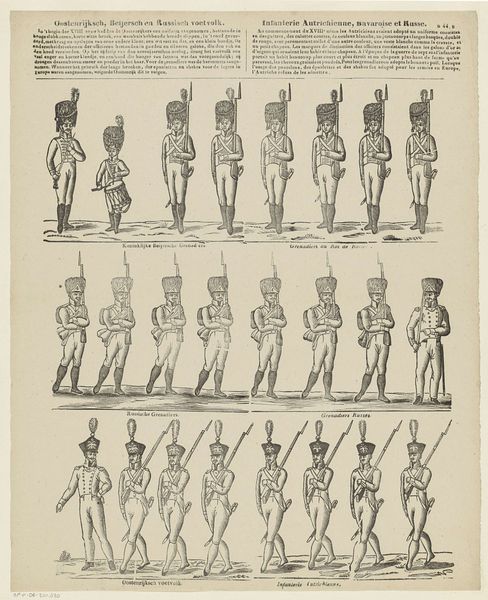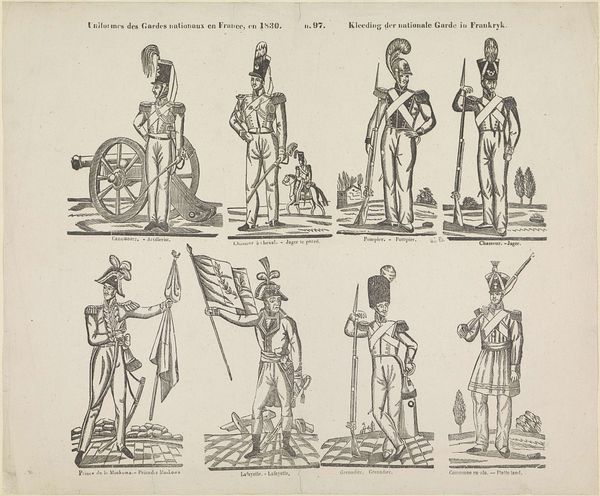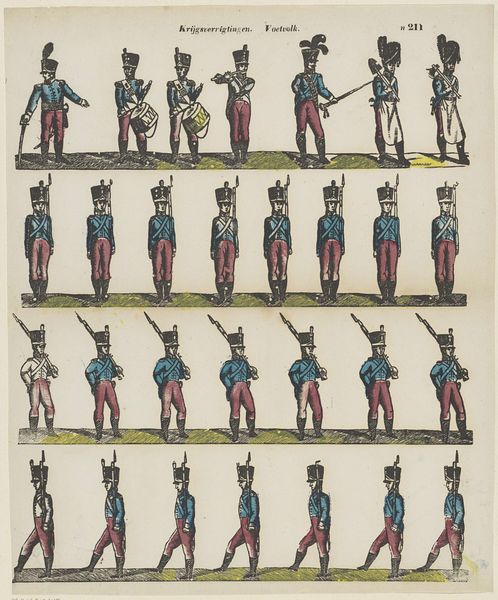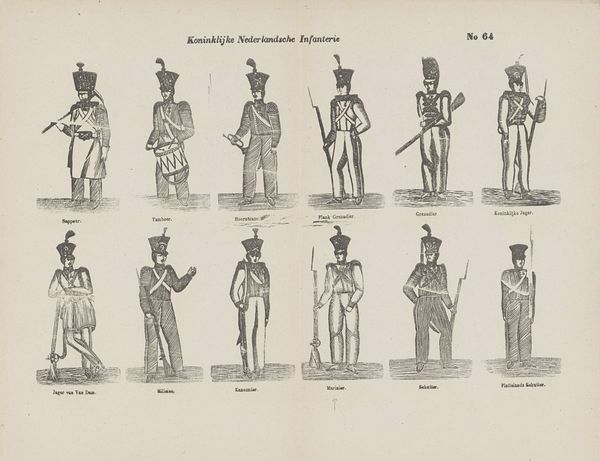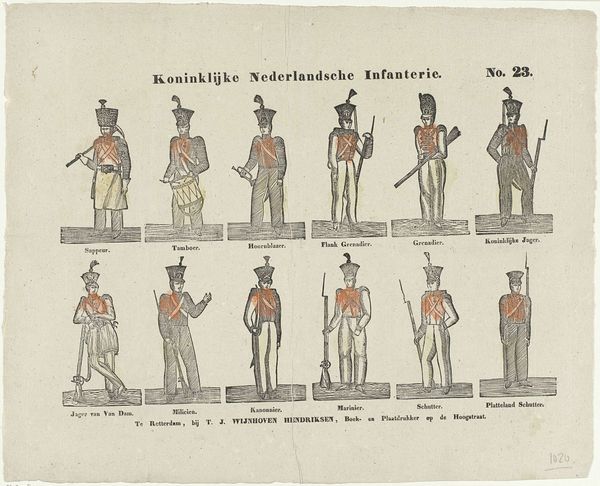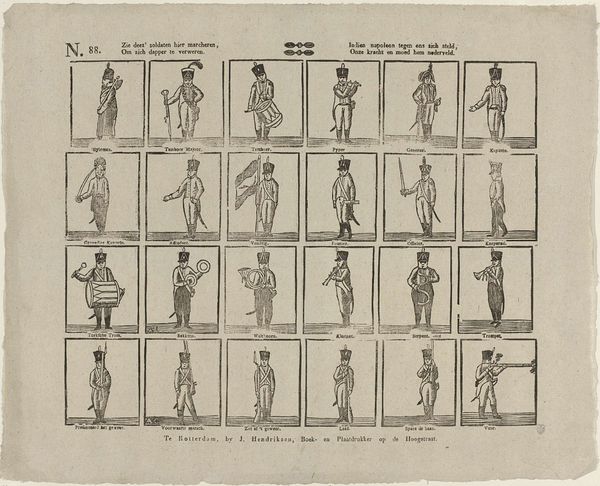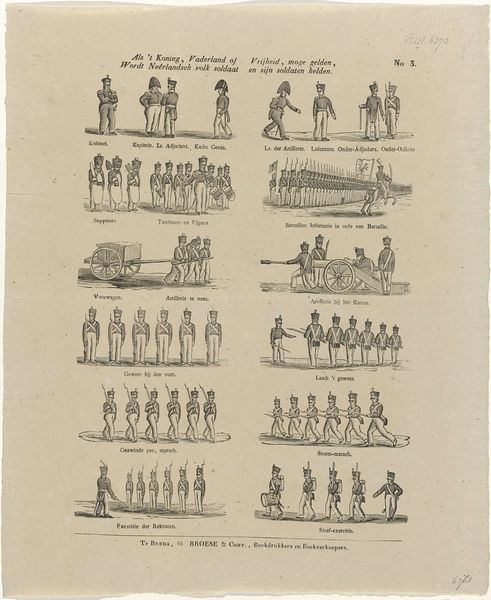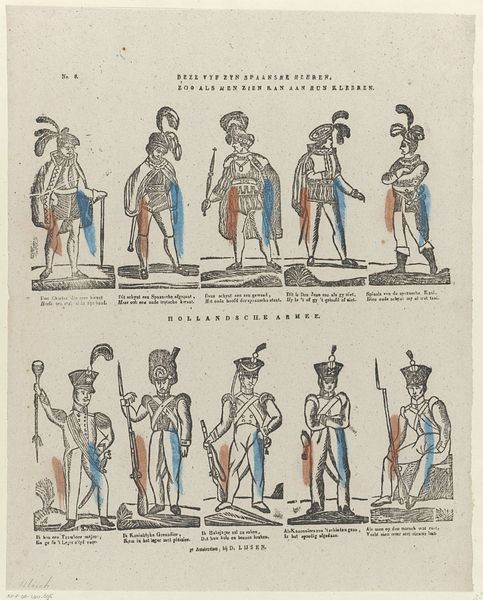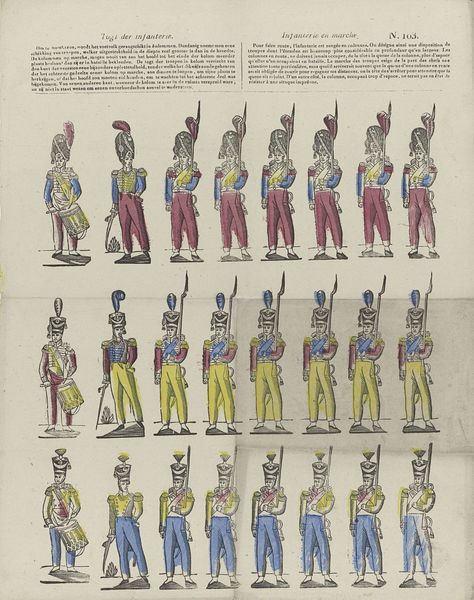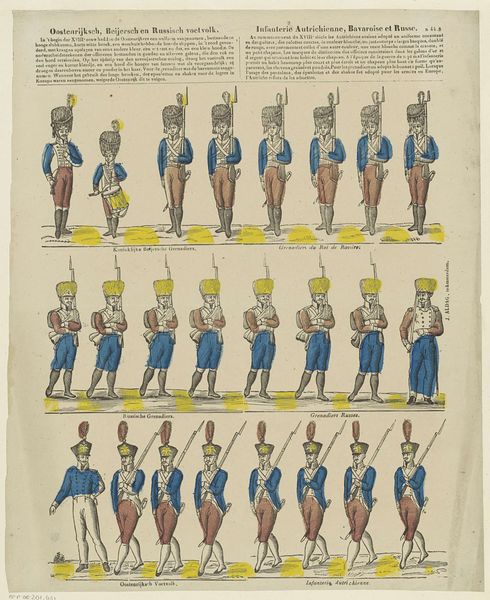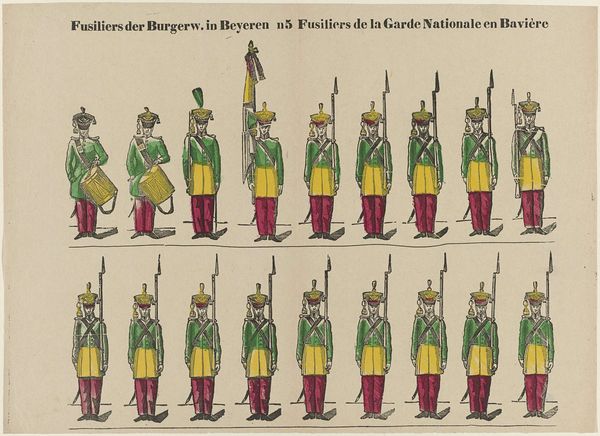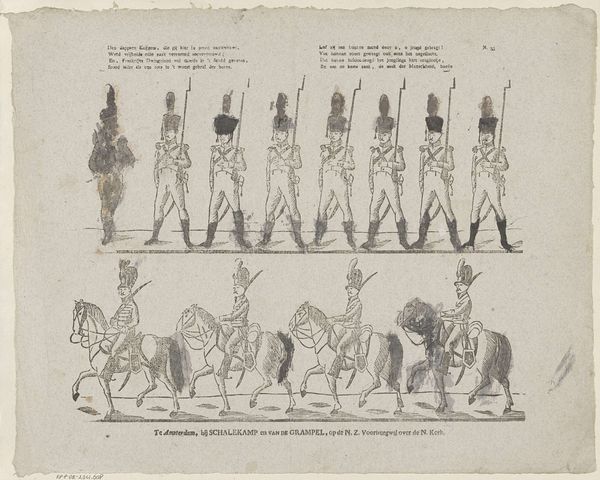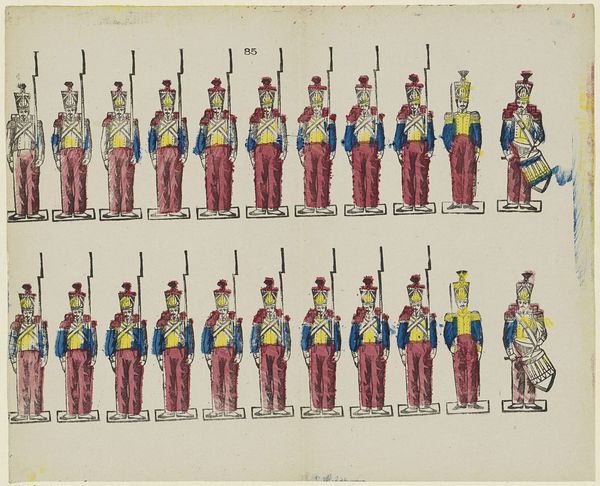
Fusiliers der burgerw. in Beyeren / Fusilliers de la garde nationale en Bavière 1833 - 1856
0:00
0:00
drawing, print, engraving
#
drawing
# print
#
genre-painting
#
history-painting
#
academic-art
#
engraving
#
realism
Dimensions: height 308 mm, width 429 mm
Copyright: Rijks Museum: Open Domain
Curator: The stark regimentation is quite striking. Editor: Indeed. We’re looking at “Fusiliers der burgerw. in Beyeren / Fusilliers de la garde nationale en Bavi\u00e8re,” or Fusiliers of the National Guard in Bavaria, a print from the mid-19th century by Glenisson & Van Genechten. The work appears to be an engraving or drawing, depicting soldiers. The print's emphasis is clarity and function over artistry, I'd say. Curator: The precision is remarkable. Look at the crisp lines forming the uniforms. You can almost feel the weight of the paper. Considering it as a functional object – perhaps part of a series illustrating different uniforms for recruitment purposes – unlocks so much about its value. Was this widely circulated, I wonder, feeding a sense of national identity and martial readiness? Editor: Good question. The availability of prints like these surely played a role in disseminating imagery tied to state power, and instilling that imagery into popular culture. The social impact of mass-produced visual representations simply cannot be dismissed. And the way these prints ended up displayed - perhaps tacked up on walls, or included in popular broadsides - matters just as much as the content they are spreading. Curator: And the craft involved—consider the labor. The engraver had to meticulously reproduce each soldier's uniform. The even distribution of the printed marks creating tone across the whole surface suggests an expert use of this process. There is little shading on display. Editor: Exactly. Also, consider how the artist’s labor intersects with state ideology. This image not only visualizes military might but actively participates in its construction. Every choice of pose and detail matters. Curator: The fact that it is reproducible is, in and of itself, important. That this isn’t some one-off portrait for an elite person, it’s made for broader appeal. That certainly reframes its significance. Editor: Precisely, by understanding these things as historical artifacts—embedded in broader processes and material conditions—we can appreciate how something as apparently simple as a printed military figure contributes to a bigger political story. Curator: Agreed. Thinking about its origins as an object made and distributed really shifts our understanding, I feel. Editor: I think so too. Every aspect has contributed to history in distinct and unique ways.
Comments
No comments
Be the first to comment and join the conversation on the ultimate creative platform.
